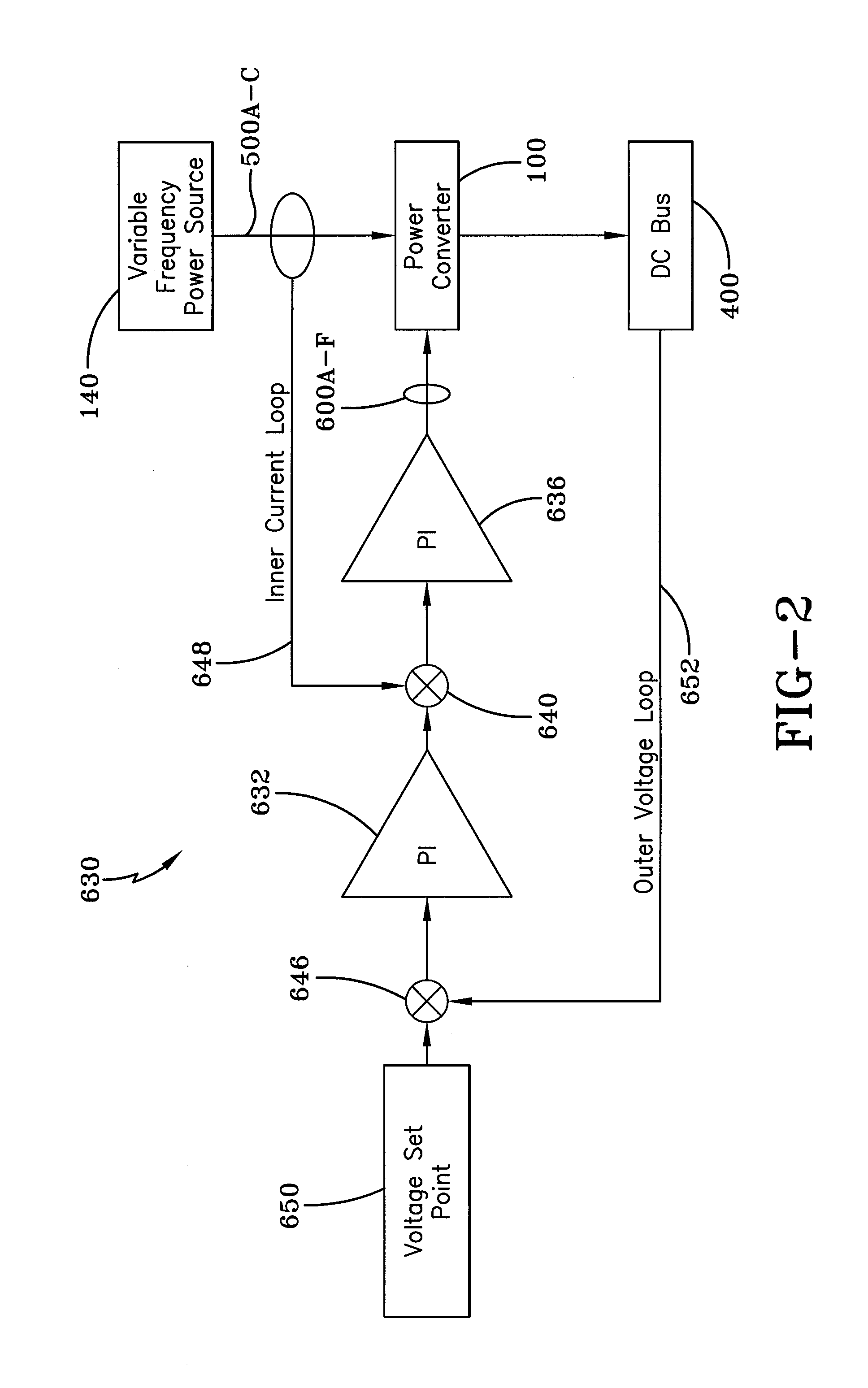Poly-phase ac/dc active power converter
a technology of ac/dc active power converter and polyphase, which is applied in the direction of power conversion systems, instruments, climate sustainability, etc., can solve the problems of unavoidable power factor shift, undesirable harmonic distortion level, and contribute to the power supply additional weight, size and cos
- Summary
- Abstract
- Description
- Claims
- Application Information
AI Technical Summary
Benefits of technology
Problems solved by technology
Method used
Image
Examples
Embodiment Construction
[0019]A poly-phase AC / DC active power converter is generally referred to by the numeral 100, as indicated in FIG. 1 of the drawings. The power converter 100 utilizes a plurality of insulated-gate bipolar transistors (IGBT) 110A-F and a DC-link capacitor 120 configured as a three-phase active H-bridge 130 to convert AC (alternating current) power received from a three-phase variable frequency power source 140, which generates power at varying frequencies, into DC (direct current) power. To reduce the inrush of electrical current into the converter 100 upon a cold start, or initial operation, of the converter 100, where the DC-link capacitor voltage is zero, a DSP (digital signal processing) controller 200 follows a control structure, which controls the IGBTs 110A-F in a predetermined sequence, to reconfigure the H-bridge 130 to operate in a boost regulation mode.
[0020]In the boost regulation mode, the converter 100 operates as a boost rectifier, such that the voltage at the DC-link c...
PUM
 Login to View More
Login to View More Abstract
Description
Claims
Application Information
 Login to View More
Login to View More - R&D
- Intellectual Property
- Life Sciences
- Materials
- Tech Scout
- Unparalleled Data Quality
- Higher Quality Content
- 60% Fewer Hallucinations
Browse by: Latest US Patents, China's latest patents, Technical Efficacy Thesaurus, Application Domain, Technology Topic, Popular Technical Reports.
© 2025 PatSnap. All rights reserved.Legal|Privacy policy|Modern Slavery Act Transparency Statement|Sitemap|About US| Contact US: help@patsnap.com



